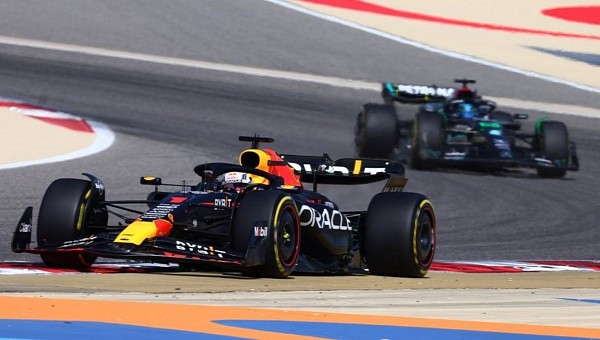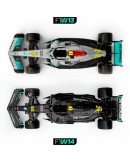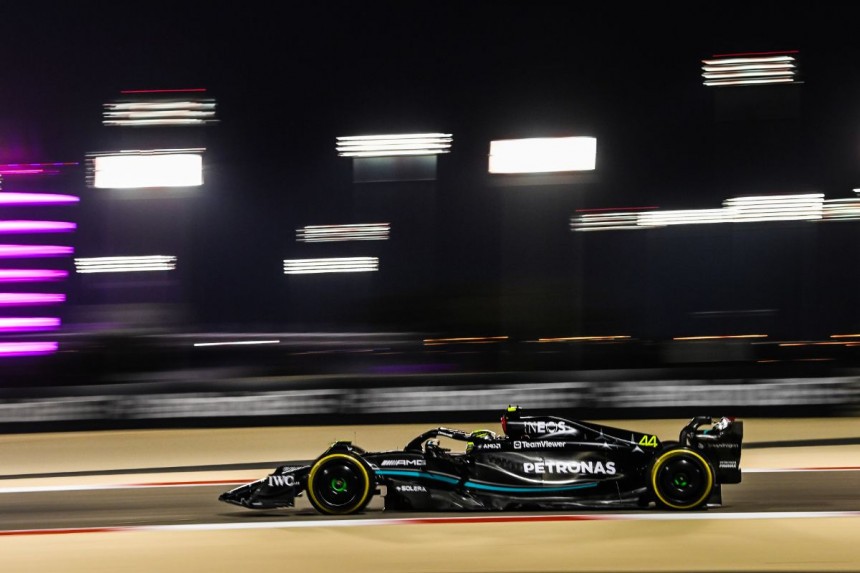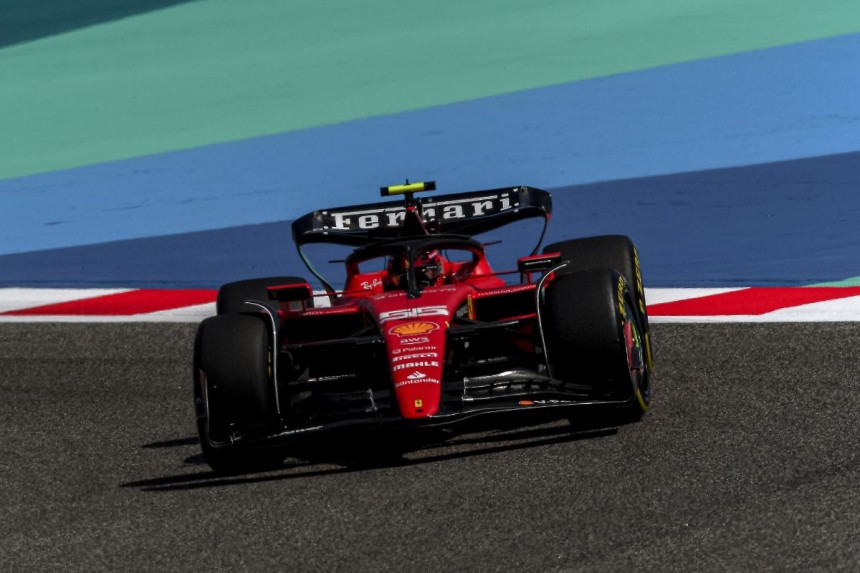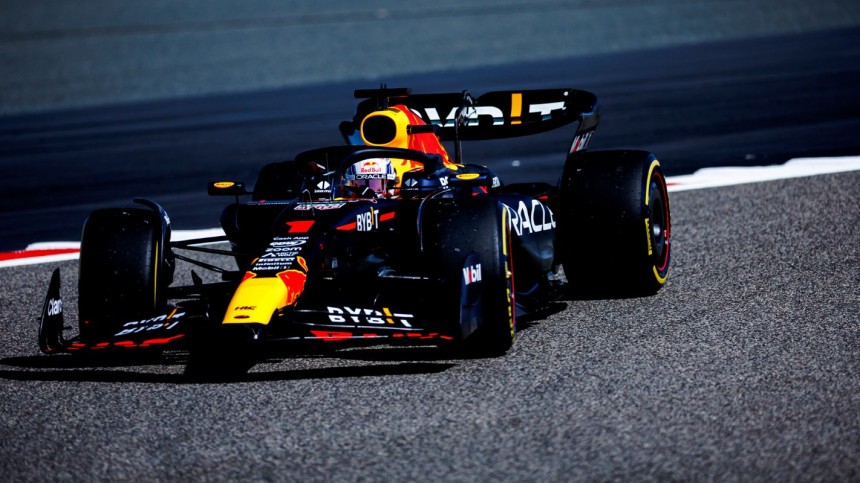After all the teams have showed their newest and latest liveries, we are very close to a new and hopefully exciting Formula 1 season. However, until the first Grand Prix, cars will go through some pre-season testing, an important moment for us fans to see exactly how things are shaping up.
Still, the majority of the fingers are pointed at the top three most popular and biggest teams of the last decade, Red Bull, Ferrari, and Mercedes. Today, we are talking about who will come on top after the long winter break and who will fall from the top stage.
If your memory is still fresh from last season, Mercedes struggled with their chassis design, which was a failure. They used that side pod idea, and for the 2023 season, they are sticking with it. The German manufacturer feels that last year's problems were unrelated to the innovative and definitely unique side pod design. Oh, and by the way, the most important thing in the configuration of these generations of cars is the underfloor. The side pod layout design is made to help with the cooling demands, and at the same time, it maximizes the airflow speed through the space between the rear wheels. As a result, the underbody performance improves, and that is why the underfloor is such a crucial element.
At the same time, the placement of the radiator determines the side pod form, influencing the arrangement and geometry of the underfloor inlets. To spell it out for you, those pods independently have a minimal effect on aerodynamic performance. Everything has a connection to the non-visible underfloor.
Still on Mercedes' turf to exemplify other problems and changes, the German manufacturer had the biggest problems with the aero platform. Addressing the initial porpoising issue, they had to modify the car's optimal riding height for the rear part. As a result, the downforce was reduced, and a larger wing had to be installed, increasing drag. Besides, maintaining the ride height within a range that maximized downforce while avoiding porpoising made teams, especially Mercedes, make the rear suspension extremely stiff.
The level of stiffness was more significant than the stiffness of the side walls of the tires. As a result, the obvious phenomenon of bouncing (which is not the same as porpoising) was generated, making the car super unpredictable at the entrance and exit of slow turns. Still, there was a fantastic thing about this design. It was the fastest in high-speed corners, dominating on S shape-corners from circuits like Austin, Silverstone, or Suzuka. In contrast, in a wind tunnel environment where everything is perfect, and the porpoising issue does not exist, the zero pod design and the W13 underfloor created some excellent numbers.
In the simulation, the huge amount of exposed floor made a large volume of air travel between the back wheels and pushed harder on the underfloor with air exiting the tunnel diffusers. The underfloor airflow is accelerated, resulting in an impressive downforce. In addition, the side pods allowed the floor inlets to be set in such a way that would maximize Mercedes's performance. Unfortunately, the reality is not the same as a simulation. In addition, they made some new slots in order to enhance the airflow. The underfloor's front part is changed, with some fresh air vanes.
Ferrari's is probably the least changed car from the whole grid compared to last year. They kept the original idea and made some additional minor changes. For example, the side pods boosted the louvers' efficacy and kept more airflow to be directed to the wing, resulting in excellent downforce. Besides, they have a specially tuned engine that provides swift acceleration out of corners. As a result, Ferrari had the most poles in the 2022 season. Unfortunately, it proved unreliable and had to be run in a detune shape most of the time.
Now, with the power unit's dependability remade and its potency restored, the aerodynamic ideas of the Italian engineers could work perfectly. I am talking especially about the new and innovative S-duct around the cockpit sidewalls that will undoubtedly be a fantastic foundation for a world championship challenge.
However, the most significant modifications can be observed on the top side of the side pod. It had been made less aggressive, helping with improving the radiator cooling. At the same time, Ferrari opted to make some important changes to the front wing. It now has the standard entire width slot gap sitting between the front element and the second piece.
Ferrari decided to add new vanes on the last two flaps, looking quite familiar with what Mercedes wanted to introduce in the previous season. However, Mercedes were banned for this innovation, so it's interesting to see what FIA had to say about Ferrari's idea.
While Red Bull dominated the 2022 Formula 1 season, they will not remain silent and just wait for the competition to catch up. Still, they had the least amount of time of all the teams in the wind tunnel. Red Bull's underfloor geometry was far more sophisticated than anybody else's and seemed to be built to maximize downforce.
Unlike Mercedes or Ferrari, the Austrian team used a camouflage livery, hiding the changes. However, I believe that they used some new aero elements, especially in the side pods and front wing zone.
Now, we just need to see what the pre-season testing will offer us so we can better understand the level of performance of each team. For the moment, we talked only about the top three squads because they usually make the biggest changes.
If your memory is still fresh from last season, Mercedes struggled with their chassis design, which was a failure. They used that side pod idea, and for the 2023 season, they are sticking with it. The German manufacturer feels that last year's problems were unrelated to the innovative and definitely unique side pod design. Oh, and by the way, the most important thing in the configuration of these generations of cars is the underfloor. The side pod layout design is made to help with the cooling demands, and at the same time, it maximizes the airflow speed through the space between the rear wheels. As a result, the underbody performance improves, and that is why the underfloor is such a crucial element.
At the same time, the placement of the radiator determines the side pod form, influencing the arrangement and geometry of the underfloor inlets. To spell it out for you, those pods independently have a minimal effect on aerodynamic performance. Everything has a connection to the non-visible underfloor.
The level of stiffness was more significant than the stiffness of the side walls of the tires. As a result, the obvious phenomenon of bouncing (which is not the same as porpoising) was generated, making the car super unpredictable at the entrance and exit of slow turns. Still, there was a fantastic thing about this design. It was the fastest in high-speed corners, dominating on S shape-corners from circuits like Austin, Silverstone, or Suzuka. In contrast, in a wind tunnel environment where everything is perfect, and the porpoising issue does not exist, the zero pod design and the W13 underfloor created some excellent numbers.
In the simulation, the huge amount of exposed floor made a large volume of air travel between the back wheels and pushed harder on the underfloor with air exiting the tunnel diffusers. The underfloor airflow is accelerated, resulting in an impressive downforce. In addition, the side pods allowed the floor inlets to be set in such a way that would maximize Mercedes's performance. Unfortunately, the reality is not the same as a simulation. In addition, they made some new slots in order to enhance the airflow. The underfloor's front part is changed, with some fresh air vanes.
Now, with the power unit's dependability remade and its potency restored, the aerodynamic ideas of the Italian engineers could work perfectly. I am talking especially about the new and innovative S-duct around the cockpit sidewalls that will undoubtedly be a fantastic foundation for a world championship challenge.
However, the most significant modifications can be observed on the top side of the side pod. It had been made less aggressive, helping with improving the radiator cooling. At the same time, Ferrari opted to make some important changes to the front wing. It now has the standard entire width slot gap sitting between the front element and the second piece.
Ferrari decided to add new vanes on the last two flaps, looking quite familiar with what Mercedes wanted to introduce in the previous season. However, Mercedes were banned for this innovation, so it's interesting to see what FIA had to say about Ferrari's idea.
Unlike Mercedes or Ferrari, the Austrian team used a camouflage livery, hiding the changes. However, I believe that they used some new aero elements, especially in the side pods and front wing zone.
Now, we just need to see what the pre-season testing will offer us so we can better understand the level of performance of each team. For the moment, we talked only about the top three squads because they usually make the biggest changes.
